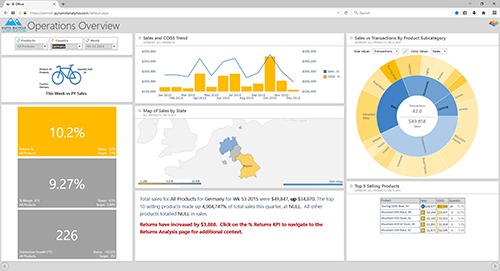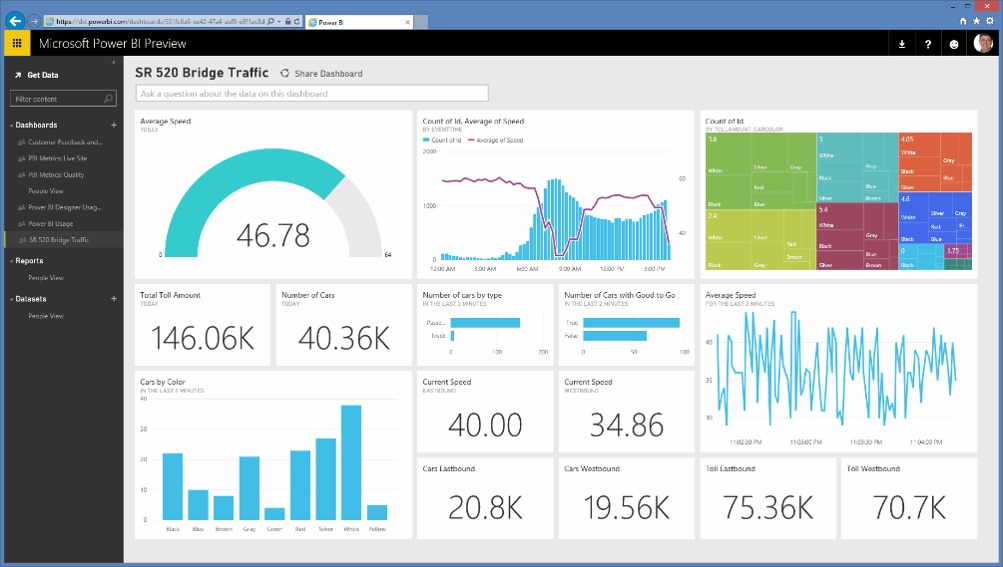Evaluating Pyramid Analytics and Microsoft Power BI for business intelligence and data analytics
When evaluating Pyramid Analytics and Microsoft Power BI for business intelligence and data analytics, it is useful to first summarize the key capabilities of each platform and the potential benefits they offer to different roles in an organization.
Then we can do a detailed feature-by-feature comparison of the two solutions across criteria like data connectivity, visualization, dashboarding, reporting, machine learning/AI, security, scalability, and ease of use.
This will allow us to understand where each platform excels and where they differ, so organizations can determine the best solution for their analytics needs based on their requirements, budgets, and user profiles. The comparison should highlight areas like visual exploration for business users, governance for IT, advanced analytics for data scientists, mobile access for field workers, flexibility for developers, and enterprise-readiness for executives.
Looking at the strengths and weaknesses of Pyramid and Power BI in this way will provide organizations with a clear framework for selecting the right platform.
Main Points Addressed by Pyramid Analytics and Power BI
- Data Visualization: Both technologies offer robust data visualization tools that enable users to create interactive reports and dashboards, making it easier to understand complex data sets.
- Data Integration: They provide capabilities to integrate data from various sources, including cloud services, databases, and spreadsheets, facilitating a unified view of data across the organization.
- Self-service Analytics: Both platforms are designed to empower end-users (non-data professionals) to perform data analysis with minimal IT intervention, promoting data-driven decision-making across all levels of the organization.
- Collaboration: Features that enable teams to share insights, collaborate on reports, and make informed decisions together are central to both Pyramid and Power BI.
- Scalability: They are built to scale from small teams to large enterprises, accommodating growing data needs and user bases.
- Advanced Analytics: Offering advanced analytics capabilities, including predictive analytics and machine learning models, to support more sophisticated data analysis requirements.

Benefits to Organizations and Employees
Data Analysts and Scientists: Benefit from advanced analytics features, data integration capabilities, and the ability to create complex models and forecasts. Pyramid's deep analytical capabilities might be more appealing for users with heavy data modeling needs, while Power BI's integration with Microsoft Azure offers advanced analytics and AI capabilities within a familiar ecosystem.
Business Analysts and Managers: Leverage self-service analytics and data visualization tools to generate insights, make data-driven decisions, and communicate findings effectively. Power BI's ease of use and integration with Microsoft products can be particularly beneficial for those already embedded in the Microsoft ecosystem, while Pyramid's customizable dashboards and reports can support more specific analytical needs.
IT and Data Governance Officers: Focus on data security, governance, and compliance features. Pyramid Analytics offers robust data governance tools, making it suitable for organizations with strict data policies, while Power BI provides secure cloud-based solutions and extensive data protection capabilities.

Comparison of Pyramid Analytics and Power BI
User-Friendliness: Power BI is generally considered more accessible to beginners and non-technical users due to its intuitive interface and integration with familiar Microsoft products. Pyramid, while offering a flexible and powerful platform, may have a steeper learning curve for new users. Point: Power BI
Customization and Flexibility: Pyramid Analytics shines in its ability to offer deep customization and flexibility in analytics, catering to more specific or advanced user needs. Power BI also offers customization but within the more standardized Microsoft ecosystem framework. Point: Pyramid Analytics
Pricing and Cost-Effectiveness: Power BI is known for its competitive pricing, including a free version and a Pro version at a relatively low cost, making it accessible for small to medium-sized businesses. Pyramid Analytics, while offering a comprehensive suite of features, may come at a higher cost, positioning it as a choice for organizations with more extensive budgets and specialized needs. Point: Power BI
Integration Capabilities: Both platforms offer strong data integration capabilities, but Power BI's seamless integration with other Microsoft products and services can be a significant advantage for organizations heavily invested in the Microsoft ecosystem. Pyramid provides robust integration options as well but is platform-agnostic, appealing to organizations with a diverse technology stack. Point: Power BI for Microsoft ecosystem users, Pyramid Analytics for diverse technology stacks
Conclusion
Choosing between Pyramid Analytics and Microsoft Power BI depends on several factors, including the organization's size, budget, specific data analytics needs, and existing technology ecosystem.
Power BI is often favored for its ease of use, cost-effectiveness, and seamless integration with Microsoft products, making it suitable for a wide range of businesses and users. Pyramid Analytics, with its focus on advanced analytics, customization, and data governance, is well-suited for organizations requiring more sophisticated analytical capabilities and those with specific data policies and compliance requirements.




